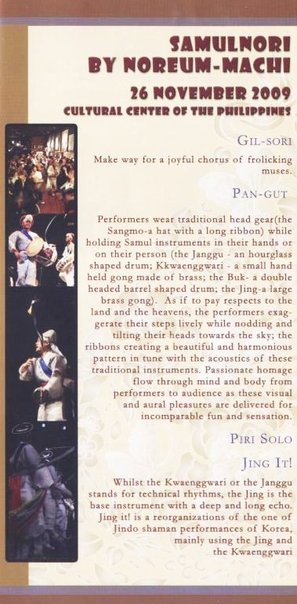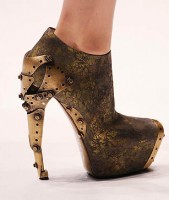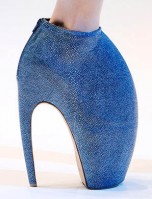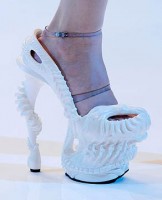
Congratulations!

Sometimes seeing means deceiving before believing, depending on your age. Children and adults size up objects differently, giving youngsters protection against a visual illusion that bedevils their elders, a new study suggests.
This unusual triumph of kids over grown-ups suggests that the brain’s capacity to consider the context of visual scenes, and not just focus on parts of scenes, develops slowly, say psychologist Martin Doherty of the University of Stirling in Scotland and his colleagues. Even at age 10, children lack adults’ attunement to visual context, Doherty’s team concludes in a paper published online November 12 in Developmental Science.
As a result, visual context can be experimentally manipulated to distort adults’ perception of objects’ sizes. But Doherty’s group finds that children, especially those younger than 7, show little evidence of altered size perception on a task called the Ebbinghaus illusion.
“When visual context is misleading, adults literally see the world less accurately than they did as children,” Doherty says.
This pattern holds for Scottish children and adults in the new study as well as for Japanese children and adults who participated in other investigations conducted by Doherty’s team.
Some researchers argue that East Asians focus broadly on the context of what they see while Westerners focus narrowly on central figures. Doherty says the new findings instead indicate that adults in both Scotland and Japan can’t help but track visual context, although this tendency was stronger in the Japanese adults.
Other investigators have noted that children with autism don’t succumb to visual size illusions, consistent with the idea that autism involves an excessive focus on details. But visual context largely eludes all young children, not just those with autism, Doherty asserts.
Even if the new findings hold up, it’s still possible that further research will show that children with autism develop a susceptibility to size illusions more slowly than those without it, remarks psychologist Danielle Ropar of the University of Nottingham in England.
Psychologist Carl Granrud of the University of Northern Colorado in Greeley calls the new study convincing but “somewhat surprising.” Children exhibit sensitivity to visual context on some other visual tasks, he says, such as one in which two equal-sized horizontal lines are perceived as differing in length when flanked by diagonal lines.
Earlier research has yielded conflicting evidence that children fall prey to the Ebbinghaus illusion, partly because of weaknesses in study designs, Doherty says.
His team studied 151 children, ages 4 to 10, recruited from a Scottish primary school and nursery school. Another 24 volunteers, ages 18 to 25, were college students.
Participants viewed a series of images containing pairs of orange circles in which one circle was 2 percent to 18 percent larger than the other. An experimenter asked participants to point to the circle that “looked bigger.”
Control images showed only two orange circles. In other images, each orange circle was surrounded by gray circles intended either to hinder or aid accurate size perception.
Misleading images showed the smaller orange circle surrounded by even smaller gray circles to boost its apparent size. Large gray circles surrounding the larger orange circle were intended to shrink its apparent size.
In helpful images, large gray circles surrounded the smaller orange circle to make it appear smaller than it actually was. Small circles surrounded the larger orange circle to magnify its apparent size.
Four-year-olds correctly identified the larger circle in 79 percent of control images. That figure rose with age, reaching 95 percent in adults.
For 4- to 6-year-olds, accuracy of size perception for misleading images remained at about what it was for control images. Misleading images increasingly elicited errors from older children and tricked adults most of the time. Adults made almost no errors on helpful images. Kids from age 7 to 10 erred on a minority of helpful images, while 4- to 6-year-olds performed no better than chance.





















Born and raised in London, Nick Brandt studied Film and Painting at St. Martins School of Art.
He started photographing in December 2000 in East Africa, beginning the body of work that is his signature subject matter and style. He no longer directs, devoting himself full time to his fine art photography now.
Brandt's first book of photographs, "On This Earth", was published in October 2005, by Chronicle Books, with forewords by Jane Goodall and Alice Sebold (author of "The Lovely Bones").
He has had numerous one-man exhibitions between 2004 and 2006, including London, Berlin, New York, Los Angeles, Hamburg, Santa Fe, Sydney, Melbourne and San Francisco.
He now lives in Topanga, California.



The perpetual wall calendar is a beautiful collage of photos that Littlebrownpen has collected while in Paris. Chalkboards, license plates, doorways, bottles, monuments. 49 glimpses of Paris that capture the the essence of the city at street level. All you have to do is to arrange the photos according to the current month and clip them together using the clear photo clips provided. After that you just have to hang it. The assembled collage is roughly 3ft x 3ft. The idea is very interesting and if you have some time and you love to take pictures you can even make your own version, or buy this one from here.

A simple frame can take an everyday object and turns it into a quirky and interesting art piece. Framing a key chain or coat hook is another way to make a functional home accessory stylish and contemporary. With this simple idea you can Turn flowers, books, keys, jewelry, articles of clothing, and other ordinary objects into works of art. This product called “Framed Objects” is available from Thinkofthe.





They came in three main varieties: first, ultra-high booties that looked more like prosthetic lobster claws than shoes you might see on the racks at Neiman Marcus, in keeping with the apocalyptic-aquatic theme of the show. These came in exotics, smooth leathers, and a variety of exterior embellishments, including shards of turquoise. The second type were booties that looked like something a resident in Wall-E’s post-apocalyptic Earth might wear. The heels were covered in an amalgamation of industrial metal, creating perhaps the most wearable shoes of the collection. The third type were intricately carved porcelain platforms that were reminiscent of a coral reef, held on to the foot by clear plastic straps.


Designer Samuli Naamanka has created the Lobby chair for the Finnish manufacturer, Piiroinen.
Normally, you might expect a chair like this to be made from plastic or fiberglass, but Samuli Naamanka has instead designed the chairs to be made from a 100% biodegradable natural fibre. The seat doesn’t contain any inorganic materials, not even binding substances. There aren’t even any oil based materials used in the chair.
After the chair has been used for a long time, the seat material can be milled and used again for the production of a new product. At the end of the life cycle, the seat can also be demolished by composting it for about 80 days.







Design the LOMO LC-A+ Your Way!
Still part of our LOMO LC-A 25th Anniversary Celebrations, we’re giving all you design-minded analogue heads the opportunity of the lifetime! Your task is to create a custom skin for the legendary LOMO LC-A+. Design it with any medium you want, but keep in mind that the winning entry is meant for mass production! With your efforts, we are giving out unarguably one of the best prizes we’ve had for a Rumble ever – read on!
The Grand Prize
A life-changing opportunity to see your design concept transformed into a limited edition LOMO LC-A+ and sold all over the world!
Priceless exposure in the design field.
A 3-day trip to the Lomography HQ in Vienna. Hotel and flight included.
5 of your self-designed LOMO LC-A+ cameras.
Runners-up will see their design concepts in a future newsletter, gallery and who knows – an exhibit of the best works!








